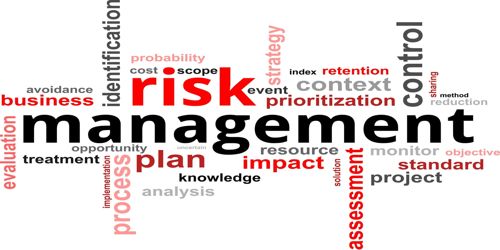Role of Risk Management in Business
Risk management utilizes the right tools, methods, and processes to manage risk. The risk is defined as the probability of an unforeseen incident and its penalty. For a business; exposure to risk could lead to disaster.
Risk can range between over-reliance on a single, customer, to the merger of two competing companies in a business. You can safeguard your business and increase its success rate by having an effective risk management policy in place. By identifying the risks before they occur, you will have the time and space to prepare and to put solutions in place if needed.
A Risk Management Process Involves –
- Methodical identification of the risks surrounding the activities of your business.
- Reviewing the probability of the occurrence of events.
- Identifying the events before they create problems and dealing with them accordingly.
- Understanding the events and ways to respond.
- Systematizing the tools required to tackle the penalty.
- Supervising the risk management approach; effectiveness and control.
Risk Management Process Results in –
- Improving your decision-making, planning and prioritizing skills.
- Well-organized allocation of the resources and the capital.
- Allows you to anticipate the problems and utilizes the best minimizing amount of firefighting and preventing a disaster, which could lead to severe financial crunch.
- Risk management significantly improves the probability of the delivery of the business plan, within your time frame and budget.
If You Are Venturing Into Something New, Then Risk Management Helps In:
Risk Identification – Risk management outlines various categories of risks faced by the new business including operational, financial, strategic, compliance related and environmental, political, safety, and health risks.
Risk Management – Clarifies the importance and events for tackling the risks that your new business establishments may face. This includes information about the evaluation of various risks and four options for managing each risk; This also helps in outlining some preventive ideas to decrease the likely hood of risks immobilizing your business.
Business recovery planning – Outlines disaster planning and also minimizes the impact of the disaster on your business and this includes aspects such as data security; employees; insurance policies and equipment.
Prevention of crime – This outlines crimes disturbing small businesses and derives some simple steps to tackle it.
Scams – Risk management discusses scams and how they could hamper your business. It also lists the methods that could help to avoid scams.
Shop Theft – Risk management discusses theft problems in a business and the areas to protect, such as adopting simple safety measures and by keeping track of the stuff and inventory.
Data Security – This oiler a variety of information, which protects the businesses and also secures data. Includes disaster recovery, risk assessment, backups and policies regarding data security.
Risk management may seem scary when you are planning your business. But by having such a plan in place, you can ensure that you protect the viability of your business for the long term.















